 
 Main Menu
Main Menu
|
 Nevada Classics
Nevada Classics
|
 Advertise at CC
Advertise at CC
|
 January 2025
January 2025
|
| S |
M |
T |
W |
T |
F |
S |
| |
|
|
1 |
2 |
3 |
4 |
| 5 |
6 |
7 |
8 |
9 |
10 |
11 |
| 12 |
13 |
14 |
15 |
16 |
17 |
18 |
| 19 |
20 |
21 |
22 |
23 |
24 |
25 |
| 26 |
27 |
28 |
29 |
30 |
31 |
|
|
 CC Advertisers
CC Advertisers
|
|

01-09-2005, 07:22 AM
|
 |
Senior Club Cobra Member

|
|
|
Join Date: Sep 2000
Location: Holderness, NH, US of A,
NH
Cobra Make, Engine: CSX 4772 old iron FE
Posts: 5,499
|
|

 Not Ranked
Not Ranked
 Eggzachary
Eggzachary
It looks like the suspension bind can be controlled by that bushing material and the tension on it from the nuts. If you use a heim it won't bind it will just change the geometry. The originals used a delrin bushing in there. I plan on using a urethane one.
|
-
Advertising


01-10-2005, 05:04 AM
|
|
CC Member

|
|
|
Join Date: Oct 2000
Location: Canandaigua,
NY
Cobra Make, Engine: FFR2521
Posts: 10
|
|

 Not Ranked
Not Ranked
Am I missing something? Wouldn't a Delrin bushing bind it completely? I ask because I am not 100% familiar with the original setup.
Craig
__________________
www.vpmcobras.com
|

01-10-2005, 08:32 PM
|
 |
Senior Club Cobra Member

|
|
|
Join Date: Sep 2000
Location: Holderness, NH, US of A,
NH
Cobra Make, Engine: CSX 4772 old iron FE
Posts: 5,499
|
|

 Not Ranked
Not Ranked
That's what I'm guessing. Hence the hardness of the bushing material or the tension on it will decellerate the freedom of movement with travel, a softer material will allow more twist and travel, funky huh? I'll let you know when it's together.
|

01-10-2005, 10:42 PM
|
|
CC Member

|
|
|
Join Date: Apr 1999
Location: cleveland,
OH
Cobra Make, Engine: CSX4000, 427
Posts: 1,999
|
|

 Not Ranked
Not Ranked
I'm just a novice, but intuitively (not that this is always correct), I would think than in a car like a cobra, front engine, high power car, with independant rear suspension, you wouold want some degree of squat, to get more weight on the rear tires, for better traction for acceleration, as only the rear tires are accelerating the car. For braking, I would think you would want some anti-dive, as as both the front and rear tires apply braking force, and you wouldn't want too much force(weight) being transferred to the front.
Alot of the old drag cars would set their cars up with the rears lowered and the front jacked up to get better (maximum) weight transfer for better traction, for acceleration.
What is wrong with the suspension geometry of the cobra's original design for it's intended purpose? I heard that the trailing arm really needed to be longer, such that it was located in the driver's body, but I guess that is not possible.
|

01-11-2005, 04:33 AM
|
|
CC Member

|
|
|
Join Date: Oct 2000
Location: Canandaigua,
NY
Cobra Make, Engine: FFR2521
Posts: 10
|
|

 Not Ranked
Not Ranked
When the car squats, the weight transfer is being absorbed by the rear springs, therfore it does not increase traction. With 100% anti-squat, 100% of the weight transfered goes into the control arms which plants the tires to the ground to increase traction. Over 100%, there is a counter force reaction that actually lifts the suspension in the rear under acceleration. You will see this with drag cars.
Craig
__________________
www.vpmcobras.com
|

02-12-2005, 09:58 PM
|
 |
CC Member

|
|
|
Join Date: Jun 2000
Location: Cape Town, South Africa/Mainz, Germany,
Posts: 1,601
|
|

 Not Ranked
Not Ranked
HI!
here is a new pic.
for those who don't know the orig setup it may help a bit.
the upper control arm UCA is mounted at an angle of about 3 deg.
so the uprights movesbackwards in bump giving more castor.
the trailing arm is mounted with a down facing bracket to the LCA, to allow for movement.
the 12,... deg of the LCA mount chassis side is probably no critical, just to push the bolt in.
I used a heim joint for the LCA at the chassis to allow for the CCW turning of the LCA in bump (a rubber bush would do as well).
I shall check toe change and castor / camber curve. Now is the time!
Dominik
__________________
If I don't respond anymore, that's because I can't log in
|

02-12-2005, 10:01 PM
|
 |
CC Member

|
|
|
Join Date: Jun 2000
Location: Cape Town, South Africa/Mainz, Germany,
Posts: 1,601
|
|

 Not Ranked
Not Ranked
here is another view (with another upper control arm), but shows the trailing arm LCA bracket.
Dom
__________________
If I don't respond anymore, that's because I can't log in
|

02-14-2005, 10:48 AM
|
|
CC Member

|
|
|
Join Date: Jan 2000
Location: scottsdale,az,
Posts: 733
|
|

 Not Ranked
Not Ranked
Dom, The shop that set up my hi-tech, added rear castor by installing both bushings behind the heim joint in the upper control arm. This is how they eliminated some bump steer, I think? Scott
|

02-14-2005, 09:25 PM
|
 |
CC Member

|
|
|
Join Date: Jun 2000
Location: Cape Town, South Africa/Mainz, Germany,
Posts: 1,601
|
|

 Not Ranked
Not Ranked
Scott,
if Iwasn't so lazy, I would have checked the suspension in bump and droop. I let you know once I did and report about bump steer.
cheers,
Dom
__________________
If I don't respond anymore, that's because I can't log in
|

02-15-2005, 09:48 AM
|
|
CC Member

|
|
|
Join Date: Dec 2001
Location: Yorba Linda,
ca
Cobra Make, Engine: B&B non-donor, 496 Genesis SO (608 HPwith 9.4:1 CR), Tremec TKO, Currier 8.8
Posts: 187
|
|

 Not Ranked
Not Ranked
Quick question:
Why do you want to add castor in bump? I always thought you wanted the maximum castor at normal ride height. This adds stability when moving in a straight line.
This rear suspension seems way too advanced to anyone like me who doesn't have the engineering background or devices to analyze force vectors or stresses. All those control arms seem to be working against each other while traveling in different arcs.
Makes for interesting reading though.
Brian
|

02-15-2005, 11:59 AM
|
|
CC Member

|
|
|
Join Date: Jan 2000
Location: scottsdale,az,
Posts: 733
|
|

 Not Ranked
Not Ranked
With an original style cobra, you get a bunch of toe out in bump. I used to run 3/16 static toe in, to keep the rear from touing out on acceleration. The added castor along with much stiffer springs took away most of the toe change. Scott
|

02-15-2005, 09:52 PM
|
 |
CC Member

|
|
|
Join Date: Jun 2000
Location: Cape Town, South Africa/Mainz, Germany,
Posts: 1,601
|
|

 Not Ranked
Not Ranked
Brian,
that is the hundred dollar question!
I am only learning as well, and refer to Paul v Valkenburh's Race Engineering & Mechanics, page21:
..., anti squat in the rear is doubly beneficial, in that the desired tire patch movement is rearward, which absorbs bumps.
back to the quetion, why did FORD design this into the chassis?
to get better traction under acceleration. But was that for the 427 street which ran on skinny tires and had a lot of bump travel, and is this rearward movement still useful for short travel suspensions and wide racing tires?
anyway, I am stuck for now with this design, but would defenitely change it to a rear suspension like seen at the 289 or SPF.
amazing how many people write to this forum, considering we all have family, house , car and probably search for letters all over the keyboard...
Coyled,
is that 3/16" per wheel?
cheers,
Dom
__________________
If I don't respond anymore, that's because I can't log in
|

02-15-2005, 11:02 PM
|
|
CC Member

|
|
|
Join Date: Dec 2001
Location: Yorba Linda,
ca
Cobra Make, Engine: B&B non-donor, 496 Genesis SO (608 HPwith 9.4:1 CR), Tremec TKO, Currier 8.8
Posts: 187
|
|

 Not Ranked
Not Ranked
[quote]page21:
..., anti squat in the rear is doubly beneficial, in that the desired tire patch movement is rearward, which absorbs bumps
Now the plot thickens. Anti squat is only beneficial for accelerating [b]in a straight line. Under body-roll conditions, the IRS geometry is doing its thing to keep the tires flat to the ground. If the camber curves are correct, a bit of squat in the corners doesn't hurt.
Also it is hard for me to believe that a low-profile race tire is so flaccid that the contact patch actually moves rearward, which somehow makes the tire even more compliant - whew.
Just the musings of an over-the-hill sports car racer.
cheerio
|

02-20-2005, 10:33 AM
|
 |
CC Member

|
|
|
Join Date: Jun 2000
Location: Cape Town, South Africa/Mainz, Germany,
Posts: 1,601
|
|

 Not Ranked
Not Ranked
Hi there,
I may open a new thread about building the whole car, but here is a new pic that you can see: I am not sleeping.
the 460 is not the best choice for this chassis.
Dominik
__________________
If I don't respond anymore, that's because I can't log in
|

02-21-2005, 10:00 AM
|
|
CC Member

|
|
|
Join Date: Dec 2001
Location: Yorba Linda,
ca
Cobra Make, Engine: B&B non-donor, 496 Genesis SO (608 HPwith 9.4:1 CR), Tremec TKO, Currier 8.8
Posts: 187
|
|

 Not Ranked
Not Ranked
Dominick,
I know you are not sleeping (at night anyway). I built a Cobra from two frame rails, a cowl hoop, and a fibreglass shell. I ended up making all the brackets, hinges, mountings, inner panels, controls, steering, suspension, etc. from scratch. The only specs I had were that Cobras have a 90" wheelbase. At night, all I could think of was a better way to do something. I ended up making everything 2-3 times until it was right. It took about fifteen years working nights and weekends.
Good luck. Sleep tight.
Brian
|

02-21-2005, 10:05 PM
|
 |
CC Member

|
|
|
Join Date: Jun 2000
Location: Cape Town, South Africa/Mainz, Germany,
Posts: 1,601
|
|

 Not Ranked
Not Ranked
Thanks BRian,
my task is actually less than building from nothing - like you did.
my sleepless nights are from thinking where to store all my Sh***
The mould from Contemporary that I took in 2003, seven CSX4000 bodies, one more chassis, 390FE parts... ;-)
and if the diff, trans, axle shafts will last the torque of the 460.
the car I build at friend's house (who is drag racing the only 514 in his FORD Escort)
rock 'n roll!
Dominik
__________________
If I don't respond anymore, that's because I can't log in
|
 Posting Rules
Posting Rules
|
You may not post new threads
You may not post replies
You may not post attachments
You may not edit your posts
HTML code is On
|
|
|
All times are GMT -7. The time now is 07:54 AM.
|


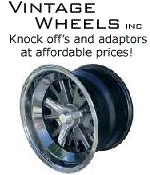
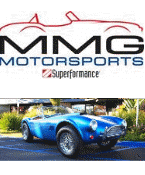


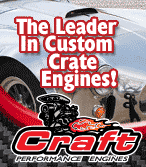
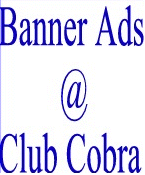



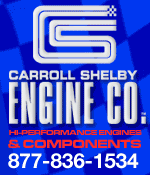





 Linear Mode
Linear Mode



